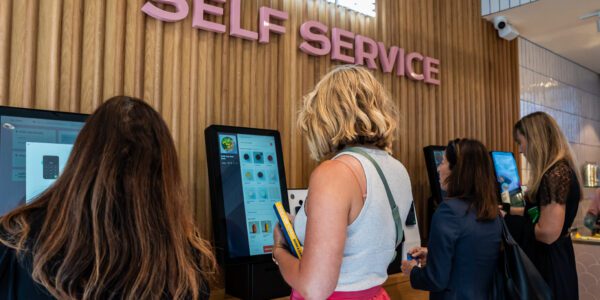Prepare for Christmas: your hospitality business checklist
Get your business ready for a successful festive season with our Christmas planning checklist for hospitality.

With the ability to boost revenue, increase throughput and drive down labour costs, self-order kiosks are becoming a must-have in hospitality.
But what about kiosks in the coffee sector?
Coffee operators have historically resisted kiosks’ charms – seeing them as out of place in a barista-led ordering environment.
However, a wave of early adopters in the industry are embracing kiosks as a key part of their omnichannel strategy, indicating digital innovation is coming to our favourite coffee brands.
Coffee titans like Black Sheep Coffee, LEON and McDonald’s are all showcasing the power of kiosks to speed up the digital adoption process – making it easier to scale successful loyalty programmes, mobile apps and new ordering channels.
What makes kiosks such a good way to build up to your omnichannel offering?
It all starts with changing your guests’ behaviour and showing them just how easy digital ordering can be.
Coffee brands are investing heavily in mobile apps and loyalty schemes to cement their brand with repeat visitors. But getting people to actually use them can be a major stumbling block.
Just like where and what time you buy a coffee is incredibly habitual, so is the way we interact with our local coffee shops. Your guests might be in the habit of using a physical stamp card for loyalty, or ordering at the till rather than through a mobile app.
That’s where kiosks come in.
Ordering from a kiosk can show guests just how easy, convenient and rewarding it is to engage with your brand digitally.
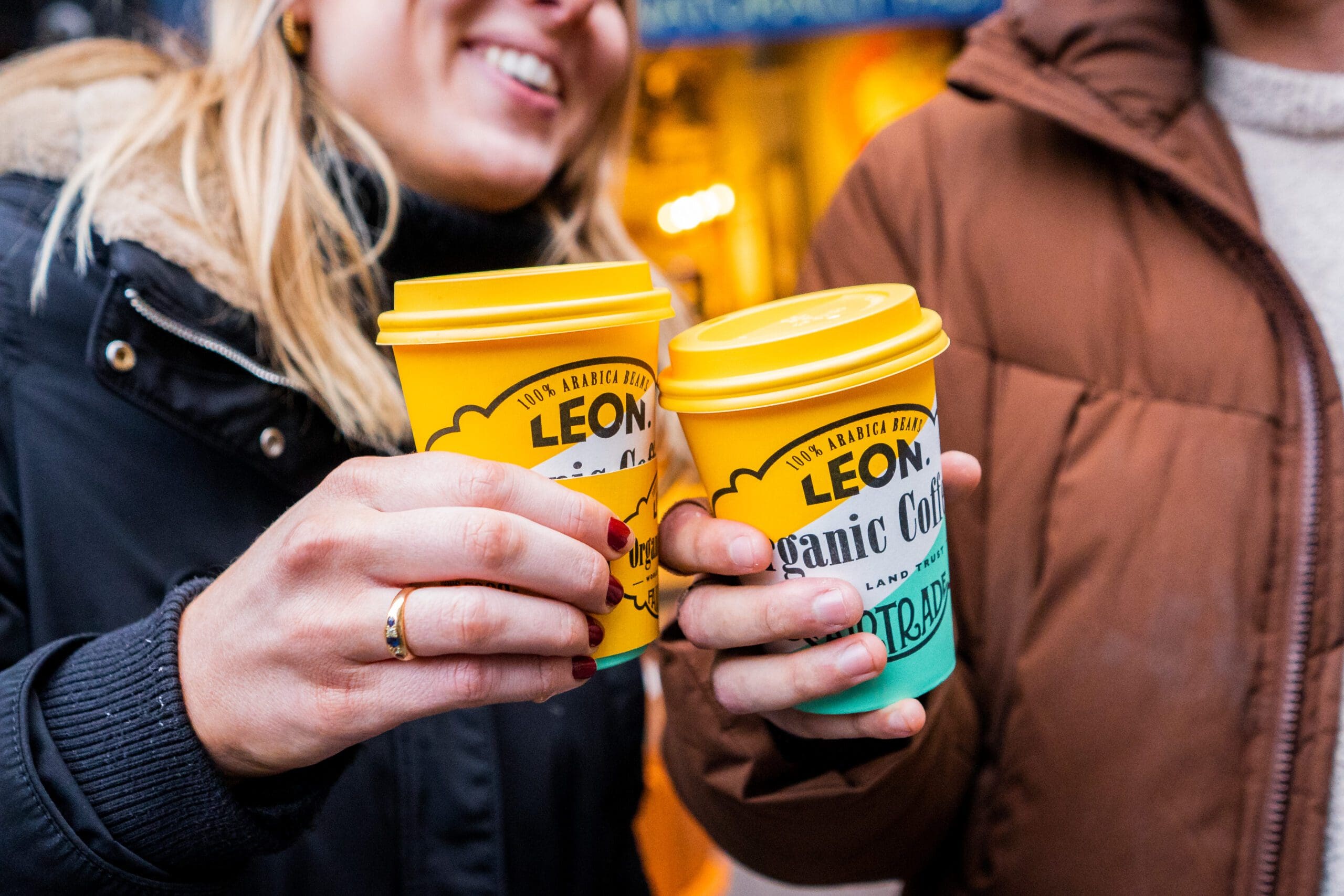
LEON and McDonald’s are two popular (but very different!) coffee providers that have invested heavily in an omnichannel approach to fuel their success. And where did it all start? You guessed it: kiosks.
Both brands warmed up their customers to the idea of digital ordering by showcasing it in their physical spaces through kiosks. When they came to launch mobile app ordering and integrated loyalty, their customers were raring to sign up and get involved.
Gareth Pearson, McDonald’s UK COO, hails self-order kiosks as “probably McDonald’s’ first step to becoming an omnichannel business”.
By making kiosks the main on-premise ordering method, McDonald’s paved the way for the success of its other digital channels (mobile app and delivery), which now account for 50% of sales globally.
40 million people have now downloaded the McDonald’s app, which coffee customers can use to collect McCafé stamps and order ahead. With global comparable sales increasing by 12% in Q4 2022, it’s fair to say that McDonald’s omnichannel approach is paying off.
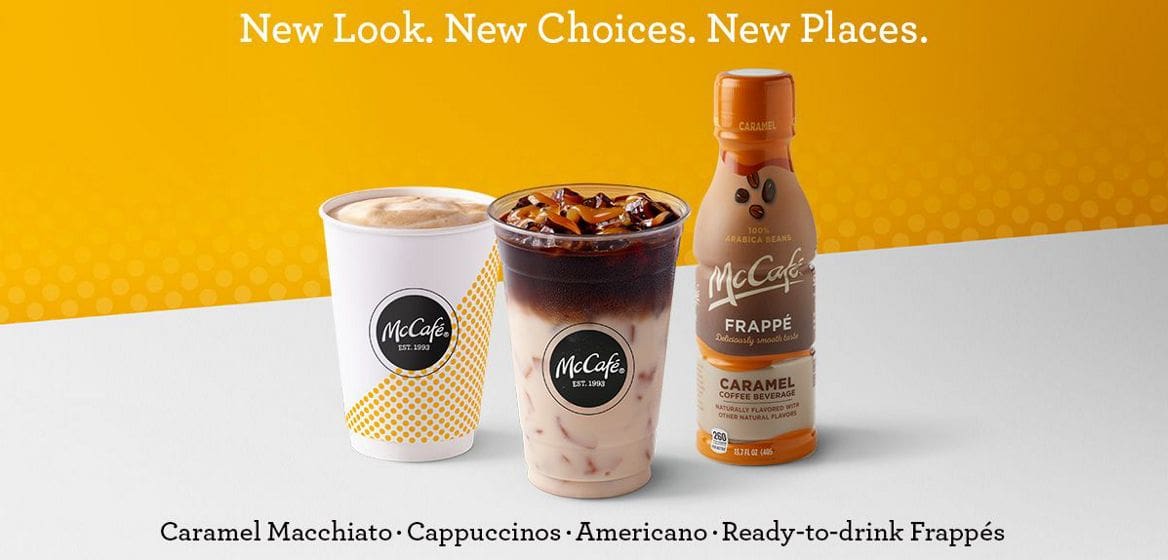
LEON has followed a similar path to success. It introduced kiosks as the main ordering method across 70% of their restaurants before launching a mobile app in 2021 “as the next step in that journey” (Glenn Edwards, Managing Director, LEON).
The app experience mirrors the kiosk guest journey, which combines digital ordering with personalised loyalty features. Since then, LEON has gone on to build its coffee credentials by launching a coffee express format in six sites and the brand is thought to be developing ‘LEON To Go’ coffee shops.
Discussing LEON’s exciting growth plans, Glenn Edwards said “there’s going to be many more coffee opportunities…watch this space!”
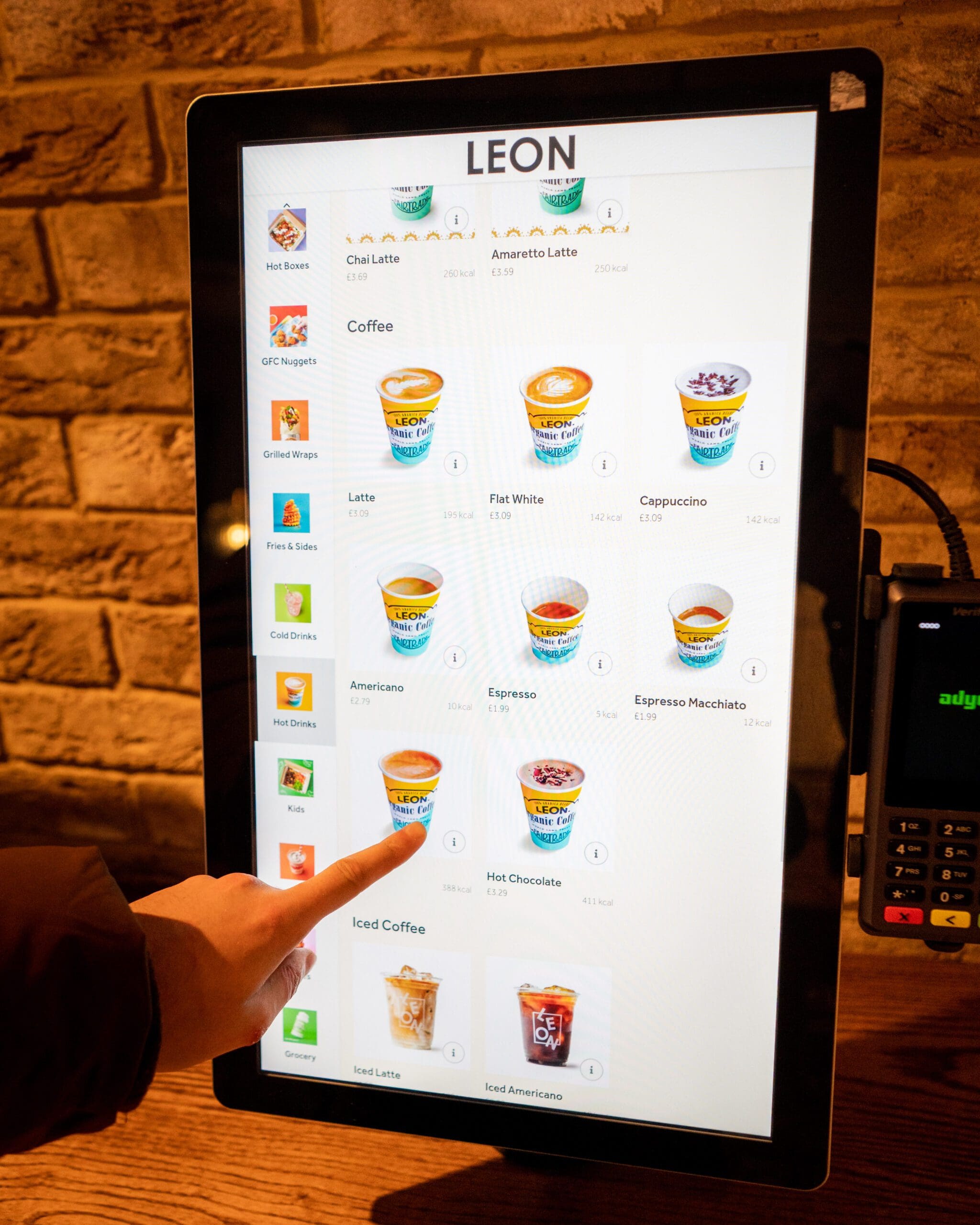
As well as introducing the idea of digital, kiosks come with several features that encourage guests to download a mobile app, sign up to a loyalty programme or subscribe to marketing.
For example, you can integrate your omnichannel loyalty scheme with kiosk software to create a consistent user experience. Customers can identify themselves on a kiosk using a QR code and manage or redeem their loyalty points, as well as hit the reorder button to get their favourite order in seconds.
Brands can also make clever use of the kiosks’ splash screens to advertise their mobile app by embedding a QR code, or they can include prompts in the ordering process for customers to sign up to a loyalty programme.
Reflecting on the power of kiosks, Nick Liddle, Commercial Director at Vita Mojo told us:
“Having self-order kiosks really accelerates the digital adoption process because they show your customers just how easy, convenient and rewarding it is to engage with your brand digitally.”
“In the Vita Mojo restaurants, kiosks were the only in-store ordering method available. Far from making the ordering process impersonal or frustrating, our customers loved them.”
“In fact, a large proportion of kiosk customers signed up to our loyalty programme and ordered from different channels like Click & Collect. In fact, Click & Collect went on to make up a whopping 40% of all orders at Vita Mojo restaurants.”
“We called it the kiosk effect!”
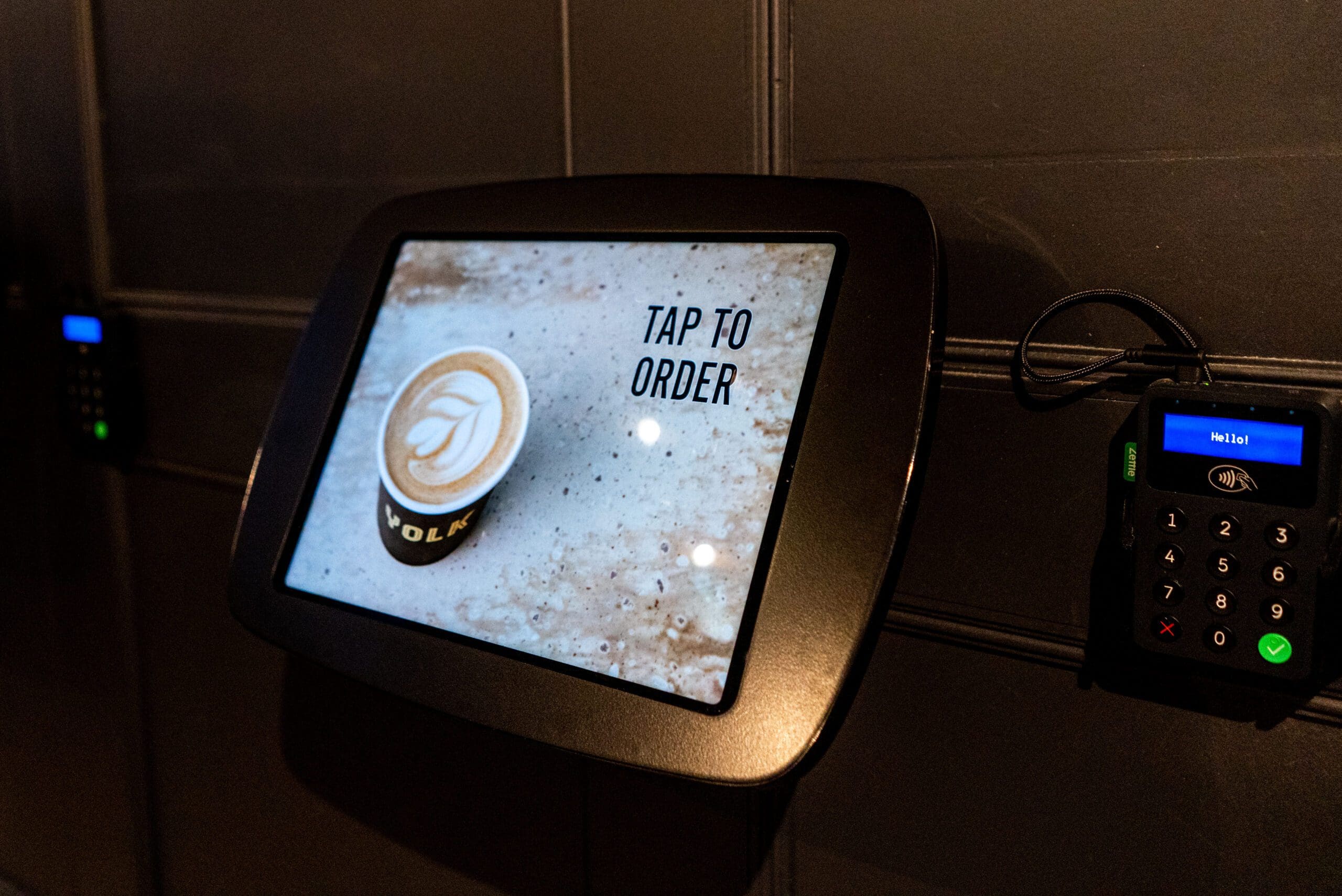
That leads us on to the other benefit of kiosks – often overlooked but critical for operators to drive efficient growth: data.
If the bulk of your customers are ordering at a POS and using a physical stamp card, you’re missing out on a huge opportunity to capture data. How are you recognising your customers across multiple channels? How are you analysing their behaviour?
As soon as you switch to a digital loyalty scheme and connect this with in-store ordering via a kiosk, you learn so much about your customers. You can reward them for their loyalty with a free treat, or send them a push notification with personalised offers. The opportunities are endless!

That’s not all; there are plenty more upsides to trialling kiosks at your coffee shop, such as:
*Data from a Vita Mojo survey of 1000 UK customers, May 2022
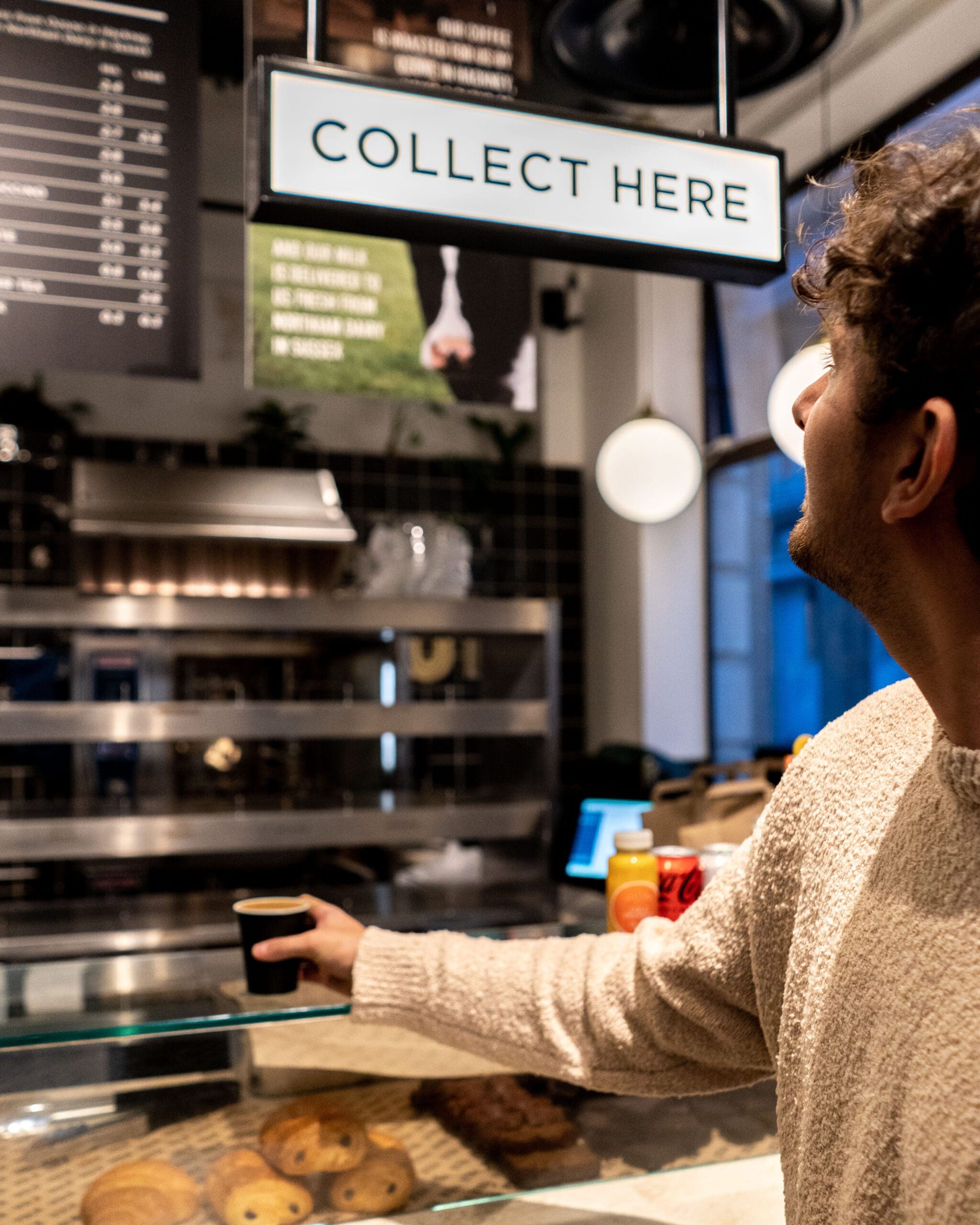
You might be thinking “hmmm I love the idea of higher throughput, but I’m not sure my operations could cope with such an increase in orders over peak.”
And that’s a fair point. After all, speed and volume are key for a successful coffee operation.
We asked Nick Liddle for his advice on this:
“I’m a strong believer that you can’t install kiosks in isolation: you have to rethink your operations and make changes to ensure you’re ready for the demand this will bring.”
“It’s not as hard as it sounds though – it could be as simple as redeploying a staff member away from your till to the coffee station.”
“Integrating your kiosk software with a Kitchen Management System will help your staff manage the flow of orders. You can also reduce stress with a collection screen which shows your guests when their order is being prepared and is ready for collection.”
When McDonald’s first introduced kiosks, they had to rethink their operational model as their kitchen was overrun with orders. Now, they’ve refined their process so they have more staff members in the kitchen to account for the increase in order volumes.
Thanks to the industry’s early adopters, signs are pointing to the coffee industry going through the same adoption process with kiosks that QSRs went through.
With the UK branded coffee shop market predicted to surpass 10,200 outlets in 2024, creating a differentiated omnichannel customer experience is the key to long-term success.
The time is now to test how kiosks can help support your omnichannel strategy. Reap the rewards of being an early adopter, rather than playing catch up later.
Talk to the Vita Mojo team today and see how our technology can elevate your brand, drive sales performance and increase efficiency across your business. Just leave a few details and we’ll get back to you as soon as possible.
Get your business ready for a successful festive season with our Christmas planning checklist for hospitality.

Discover how to launch and implement your coffee shop Click & Collect order channel in the most effective way for the biggest results.

Self-ordering kiosks increase ATV and throughput – but that’s not all: your customers love them too. Learn the reasons why in this kiosk deep-dive.
